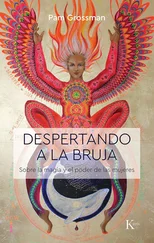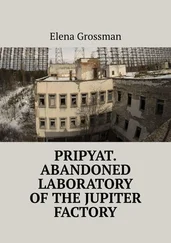I admit some of these could have been fakes and I’m just going to claim that they’re not.
There was a long thread of screenshots posted. Most of these were obvious fakes; the authentication thread had a master post that stuck to the top, listing the hurdles any Mournblade screenshot had to pass to be marked as authentic.
Mournblade illuminates itself and the immediate environment to the distance of two grid spaces.
Mournblade takes the form of a high-end weapon in whatever continuity it belongs to; in fantasy context, invariably a two-handed sword. In Clandestine, allegedly a sniper rifle.
Weapon appears recolored in black and has a distinctive set of runes running down its length.
These runes had spawned their own thread, which attempted to identify the sword’s particular runic language and attempt a translation. This latter discussion had been invaded by a contingent of medievalists and philological scholars, which resulted in a surprisingly uncivil thread on the nature of Futhark, Younger Futhark, Futhorc, Quenya, and Cirth—plus the relative merits of The Silmarillion and The Lord of the Rings and their respective film adaptations—before the thread terminated unhelpfully in a flutter of warnings and then permabans.
Mournblade flashes white on a successful hit, at which point the target seems to be dealt damage equal to or over its hit points or damage allowance (in the case of objects or golems or robots), regardless of resistances or invulnerability. In theory, Mournblade should not affect an undead creature, but this has not been tested.
An authentic Mournblade shot must include the corpse of an in-game person that should otherwise be unkillable or indestructible by normal means, or at the very least it should include the debris of a plot-critical object.
rec.games.computer.black-arts.history (moderated) #2988
Subject: Re: THE MAN (was: E3 rumors—who saw what?)
From: “Mandemonium”
Date: Sun Jun 14 02:15:28 EDT 1998
UPDATED!!!
I, MANDEMONIUM, HAVE WIELDED MOURNBLADE!!
I got it off an unlucky court guard! I managed to get through most of the castle before getting boxed in by dead bodies, and I died pretty soon after. But I’m pretty sure King Aerion can be killed.
By far the longest thread was a debate about the rights and wrongs and uses of Mournblade itself, which divided the Black Arts enthusiasts into permanently balkanized camps.
The Harvesters (collectively, “The Harvest”) were the most vocal; led by a poster called D3athLoom, who gave no name but was tagged with a University of Helsinki address, they just wanted to find it. It was the most powerful item in the multiverse and they just wanted to get their hands on it and run amok for as long as possible. They wanted to kill the fat old king of Ahr, all four Heroes, the princess R’yalla, your old mom and dad back at the round tower, if possible, and as much of the Endorian population as lay in between. As long as you could move fast enough it could be done. A few claimed to have wielded it for a time, but the rate of hit point loss was simply too fast to allow you to survive for long anywhere except a crowded city or a battlefield.
The theory was that with the right combination of elements you could live and kill forever. A ring of regeneration could slow the rate at which Mournblade leached the life out of its wielder, but it couldn’t stop it entirely. A ring might be supplemented by a team administering regular healing spells, if NPCs could be compelled to do so. Combine that with a system for ensuring a regular, limitless flow of victims and maybe you would have a chance. How small did a monster have to be before it lacked a soul? A carnivorous ape? A giant rat? A killer bee? Could Mournblade feed on a zombie? Could a necromancer reanimate foes as fast as they were killed? Could Mournblade feed on magically animated golems? Summoned daemons? One of the monsters that regenerates hit points? Could the gods themselves be killed?
And there was no reason to limit oneself to a fantasy milieu—the blight of Mournblade extended across all worlds. The terror of Mournblade might be unleashed in the supercrowded levels of Mexico City or Calcutta, or in the cold industrial cruelty of a Stalinist prison camp. Was there a biotech level in Solar Empires sufficient to create a sustenance system that Mournblade couldn’t defeat? Or a clone factory that could manufacture victims? Did clones have souls?
The anti-Mournblade faction condemned it as poor game design. When a player gained access to the runesword, the game itself ceased to be meaningful. All that carefully calculated game balance, all the storytelling, all the carefully paced challenges fell apart—all the artistry of any game became meaningless. Mournblade killed at a touch—what was the point of that? Games weren’t just about getting as much power as possible, they were about succeeding against nearly impossible odds and, with enough skill, triumphing. What did it all mean with Mournblade in hand? The Harvesters were at best immature, at worst psychopathic.
There was a third group, the Mourners, who were also interested in Mournblade but considered themselves distinct from the Harvesters. They had their own forums, but those were invitation-only.
It was a Friday evening, which I could remember used to matter to me when I was trying to have a life. I thought about what all my friends were doing this summer. They were interning in D.C. or New York. It was 1998. Sex and the City had just started on HBO. People were going out at night; people were drinking martinis. But I had either become so pathetic I didn’t even think about having a life anymore or I had fallen so far down in the social world I’d come out the other side into an upside-down place where what I was doing was actually cool.
Either way, I dug up the set of seven floppy disks that contained 1988’s Realms of Gold IV: City of Hope . They built it the year after graduating high school. Darren and Lisa were at UMass, and Simon was living at home and working at a Kinko’s. He made the long car trips west to Amherst. Long Sunday night or Monday morning drives west out of Boston along the Massachusetts Turnpike. By November the foliage had gone, just a few ice-encrusted oak leaves hanging on. The roads were bad; sometimes he’d have to crawl at fifteen miles an hour through inches of slush, but he didn’t care. He slept in Darren’s room or the student lounge and lived on what Darren could smuggle out of the dining halls—cookies, bruised apples, single-serving boxes of frosted flakes, half-pint cartons of milk. Anything was better than home. In high school he was a loner. Now that he’d graduated he was something closer to a recluse. When he had nothing else to do he just rode the bus around Cambridge, or walked around Harvard or Tufts, passing the kids his age on their way to class.
Once, he was bored enough and lonely enough to go back to our old high school to see the annual talent show. A one-act play, two garage bands; a group of dancers performing to some Prince songs. Simon lost himself for once in the closeness of the school auditorium, the smell of sweat and bodies moving. What made him different from them? How had they learned what he didn’t? But it was too late: the Second Age was over. Order and sense had been utterly smashed. Endoria was a cracked, debris-strewn sauna pit of contending factions. He had to begin the Third Age, but didn’t quite know what it was.
Lisa had told me that if you dug down into Black Arts code, you’d find that a lot of the functions were just copied out of previous versions. There were chunks of code that had been migrating between versions forever because people never felt like taking them apart and fixing them.
Читать дальше
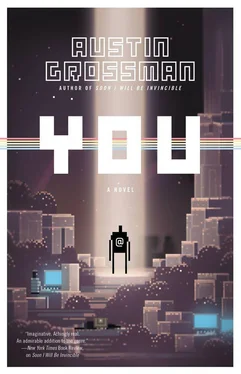
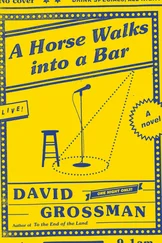
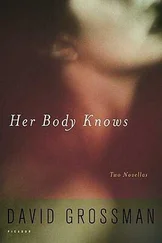
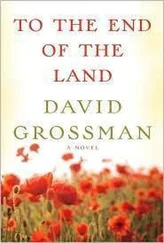

![Ally Carter - [Gallagher Girls 01] I'd Tell You I Love You But Then I'd Have to Kill You](/books/262179/ally-carter-gallagher-girls-01-i-d-tell-you-i-lo-thumb.webp)

